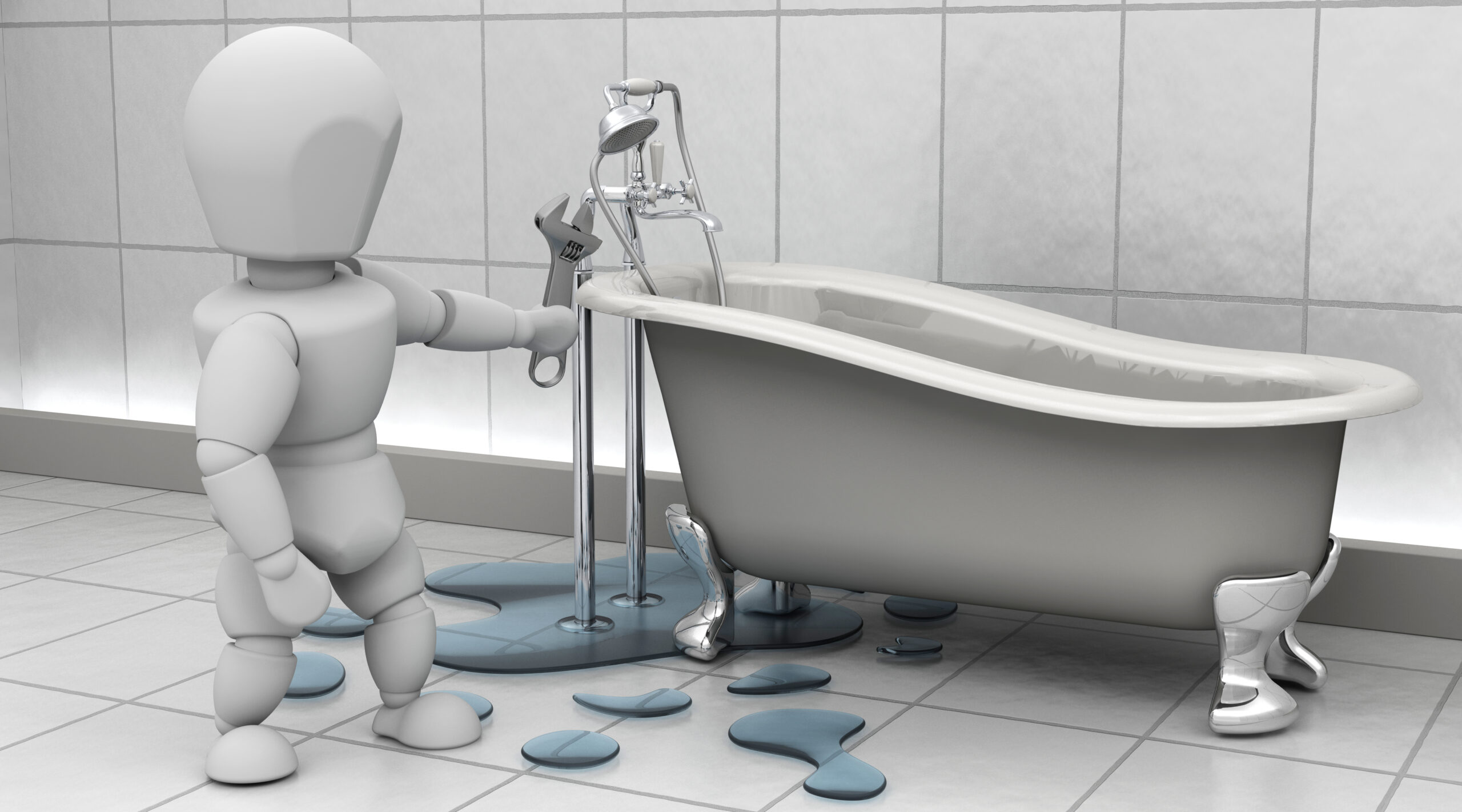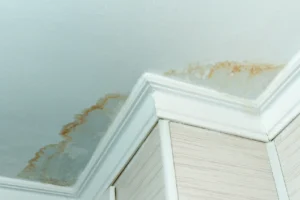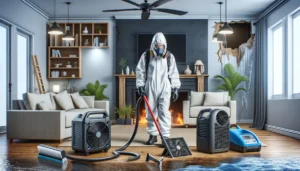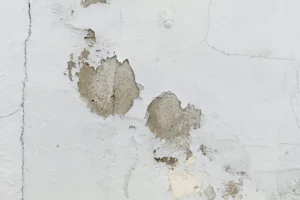# Mold After Water Damage: Risks, Cleanup and Prevention
Water damage isn’t just inconvenient – it can create an environment where mold flourishes. Mold spores are always present in the air, but they need moisture to grow. The U.S. Environmental Protection Agency (EPA) stresses that the key to mold control is moisture control【603361708340195†L108-L112】; if water‑damaged areas aren’t dried within 24–48 hours mold growth is likely【603361708340195†L108-L113】. Understanding how mold forms, the health risks it poses and the proper steps for remediation helps protect your home and family after a leak or flood.
How Mold Grows After Water Damage
Mold needs three things: mold spores, a nutrient source (such as wood or drywall) and moisture. Flooding, leaking pipes, overflowing appliances and high indoor humidity all introduce moisture into walls, floors and furnishings. The EPA notes that even small plumbing leaks or condensation from bathrooms can allow mold to begin growing indoors【603361708340195†L108-L125】. FEMA warns that water‑damaged items may harbor hidden mold behind flooring, walls or appliances and that drying your home and removing water‑damaged items is the most important step in repairing mold damage【406770842185776†L283-L297】.
Common places where mold thrives include:
- Porous building materials – drywall, ceiling tiles, insulation and carpet padding hold moisture, giving mold a foothold. The EPA advises that porous materials that become moldy may need to be discarded because it can be difficult to remove mold completely【672745202838130†L158-L166】.
- HVAC systems – if ducts are contaminated or moisture collects near air intakes, mold can be distributed throughout the building【672745202838130†L133-L138】.
- Basements and crawlspaces – flooding and high humidity make these areas prone to persistent dampness.
Health Risks of Mold Exposure
Mold can cause or worsen a variety of health problems. The EPA explains that inhaling or touching mold may trigger allergic reactions, asthma attacks and irritation of the eyes, skin, nose and throat【603361708340195†L129-L149】. FEMA notes that infants, children, the elderly and individuals with weakened immune systems or breathing problems are more likely to experience severe reactions【406770842185776†L288-L294】. The CDC warns that people with allergies, immune suppression or underlying lung disease should avoid participating in mold cleanup【81584107484668†L82-L93】. In serious cases, exposure may lead to fungal infections.
Safe Cleanup: Steps After Water Damage
Dealing with mold safely involves both drying the structure and protecting yourself. Follow these steps:
- Protect yourself and vulnerable people. The CDC recommends wearing a NIOSH‑approved N95 respirator, protective gloves and goggles when cleaning mold【81584107484668†L94-L107】. Individuals with asthma, COPD, severe allergies or compromised immune systems should stay out of moldy buildings【81584107484668†L82-L93】.
- Stop the water source and dry quickly. Fix leaks or stop floodwater. Use pumps or wet vacuums to remove standing water. Open windows and doors to ventilate the space and, when electricity is safe, run fans and dehumidifiers. FEMA explains that cleaning and drying the structure quickly is essential; open closets and cabinets to speed drying and use fans to blow air out of windows【406770842185776†L306-L317】.
- Remove and discard unsalvageable materials. Porous items such as carpeting, ceiling tiles and upholstered furniture that cannot be thoroughly dried within 24–48 hours should be thrown away【672745202838130†L158-L166】. FEMA emphasizes that contaminated structural materials and personal property must be removed and disposed of if they cannot be cleaned and dried completely【406770842185776†L318-L320】.
- Clean hard surfaces properly. Scrub mold off hard surfaces with detergent and water and dry completely【672745202838130†L158-L161】. Do not paint or caulk over mold; surfaces must be clean and dry before finishing【672745202838130†L172-L173】. The CDC advises that a mixture of no more than one cup of bleach per gallon of water can disinfect surfaces【81584107484668†L116-L129】. Never mix bleach with ammonia or other cleaners because dangerous fumes can result【81584107484668†L116-L123】.
- Handle cleaning products safely and avoid cross‑contamination. Bag and seal mold‑contaminated waste before carrying it through the house. Shower and wash clothing after cleaning【406770842185776†L321-L325】. Do not mix cleaning products and ensure good ventilation when using them【406770842185776†L323-L324】.
- Document damage. FEMA recommends taking photographs of damaged materials and keeping receipts for repairs. Documentation is important when seeking assistance or filing insurance claims【406770842185776†L332-L336】.
- Know when to call professionals. According to the EPA, if the moldy area exceeds 10 square feet, the HVAC system is contaminated or the water source is sewage or other contaminated water, hiring a professional remediator is advised【672745202838130†L115-L124】. Professionals follow standards such as those from the American Conference of Governmental Industrial Hygienists (ACGIH) or the Institute of Inspection, Cleaning and Restoration Certification (IICRC)【672745202838130†L120-L131】.
Prevention Tips
Mold prevention is all about moisture control:
- Fix leaks immediately. Repair plumbing leaks and roof problems promptly and keep gutters and downspouts clear to avoid water intrusion.
- Ventilate and reduce humidity. Use exhaust fans in bathrooms and kitchens; run a dehumidifier in damp areas. The EPA notes that increasing ventilation and cleaning more often usually prevents bathroom mold from recurring【672745202838130†L184-L190】.
- Clean and maintain. Clean and dry surfaces regularly, especially in damp rooms. Don’t leave wet clothes or towels in piles.
- Monitor indoor humidity. Keep indoor relative humidity below 50 percent with air conditioning or dehumidifiers. Condensation on windows or pipes indicates excess moisture.
- Insulate and air‑seal. Proper insulation and vapor barriers help prevent condensation in walls and attics.
When to Seek Medical Advice
If you experience persistent respiratory symptoms, allergic reactions or infections after exposure to mold, consult a healthcare professional. People with underlying health conditions should avoid exposure and let trained professionals handle cleanup【81584107484668†L82-L93】. If a flood or leak has exposed you to sewage‑contaminated water, seek medical attention for potential infections.
Conclusion
Mold growth after water damage can lead to significant health issues and costly repairs. The EPA and CDC agree that drying water‑damaged materials within 24–48 hours and fixing leaks quickly are essential to prevent mold【603361708340195†L108-L113】. If mold does develop, act promptly: protect yourself, remove unsalvageable materials, clean and dry hard surfaces, and address underlying moisture problems. With proper safety precautions and moisture control, you can restore your home and protect your family from the hazards of mold.
Sources
- U.S. Environmental Protection Agency (EPA) – Mold Cleanup in Your Home【672745202838130†L158-L166】
- U.S. Environmental Protection Agency (EPA) – A Brief Guide to Mold, Moisture and Your Home【603361708340195†L108-L125】
- Centers for Disease Control and Prevention (CDC) – Mold Clean Up Guidelines and Recommendations【81584107484668†L82-L107】
- Federal Emergency Management Agency (FEMA) – Mold: Problems and Solutions Fact Sheet【406770842185776†L283-L329】





